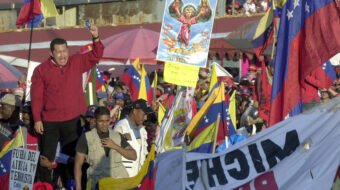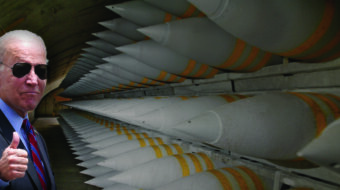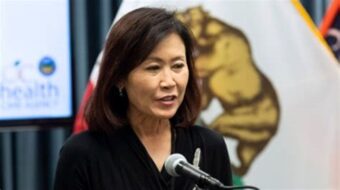
In the April 10 Peruvian elections, the most left-wing presidential candidate, Ollanta Humala of the “Peru Wins” (Gana Peru) alliance, came from behind and bested a whole array of right-wing candidates to enter a runoff on June 5.
Humala, a former army officer, also ran for president in the previous elections, in 2006. At that time, he also entered the runoff, against Alan Garcia of the right-populist APRA party. Polls had Humala winning but shortly before the runoff election a clever smear campaign was organized. Supporters of his opponent spread rumors that, during the Peruvian army’s war against the Maoist “Shining Path” (Sendero Luminoso) guerillas, Humala was implicated in human rights abuses, though investigations have basically discounted this. This rumor campaign cut into his support from the left, while he was also portrayed from the right as a clone of Venezuela’s left-wing President Hugo Chavez. This was enough to give Garcia a slight 53 to 47 margin, even though he had his own baggage coming from the huge corruption scandals of his first term as president, from 1985 to 1990.
This time around, Peru found itself with much-touted indicators of economic “prosperity,” but an unsatisfied people. The dissatisfaction has arisen from the fact that the prosperity has been confined to upper strata of Peruvian society, while indicators for the mass of workers and farmers, and especially for the millions of indigenous Peruvians in the Andean highlands and the Amazonian forested regions, have remained unfavorable. There is concern about the impact of the U.S.-Peru Free Trade Agreement and especially about corruption.
Ollanta’s candidacy joined his own Nationalist Party with others, including the Peruvian Communist Party (no relation to the Maoist terror group), to form the Gana Peru alliance, which took a cautious stand for greater economic equality and social justice. All the other major candidates were right wing and based their economic proposals on the neoliberal program of “free” trade and privatization.
President Alan Garcia’s own party, the venerable APRA, ended up being in such disarray that it did not even field a presidential candidate. This appears to be a historic collapse; for much of the 20th century, APRA was seen by the Peruvian upper class and especially the military as a bogeyman that on no account was to be allowed to win an election. More than one coup was plotted in the Peruvian officer corps with the purpose of preventing a victory by the APRA “reds” and their leader, Victor Raul Haya de la Torre (1895-1979). Whether APRA will ever recover remains to be seen.
Humala, who got about 32 percent of the vote in the first round, will face Keiko Fujimori, daughter of former dictator Alberto Fujimori, in the runoff; she took about 23 percent of the vote. Support for Fujimori seems to be based on the idea that she would be tough on crime and disorder. Third was former World Bank economist Pedro Pablo Kuczinski. Former President Alejandro Toledo trailed far behind with about 15 percent.
Support for Humala came heavily from indigenous populations who have suffered poverty and repression from Garcia’s government, as well as from the working class and the left.
Writing for the Peruvian Communist Party, Teofilo Bellido hailed the results of the runoff as a popular victory, characterizing it as “a repudiation of the existing poverty, of ‘entreguismo’ [subordination of Peru’s interests to foreign capital], of corruption, of environmental contamination and of the absence of dignified work,” and warned that a massive effort will be required not to see a repeat of the 2006 runoff disappointment.
Peru’s other Communist Party, “Patria Roja” (Red Fatherland, also no connection to the Maoist Sendero Luminoso), initially not enthusiastic about Humala, also called for a repudiation of Fujimori and for a vote for Humala in the runoff, bannering the statement on its website with “Close the road to the Fujimori mafia! Vote for Ollanta Humala!” It characterized the regime of Alberto Fujimori as “incarnating one of the most dark and corrupt phases” in Peruvian history.
The senior Fujimori is currently serving a 25-year prison sentence for corruption and abuse of power when he was president. Although she says she will not, many Peruvians fear that Keiko Fujimori might find a way to free her father from jail if she makes it to the presidency.
Image: Young people show support for Humala, via his campaign site.












Comments